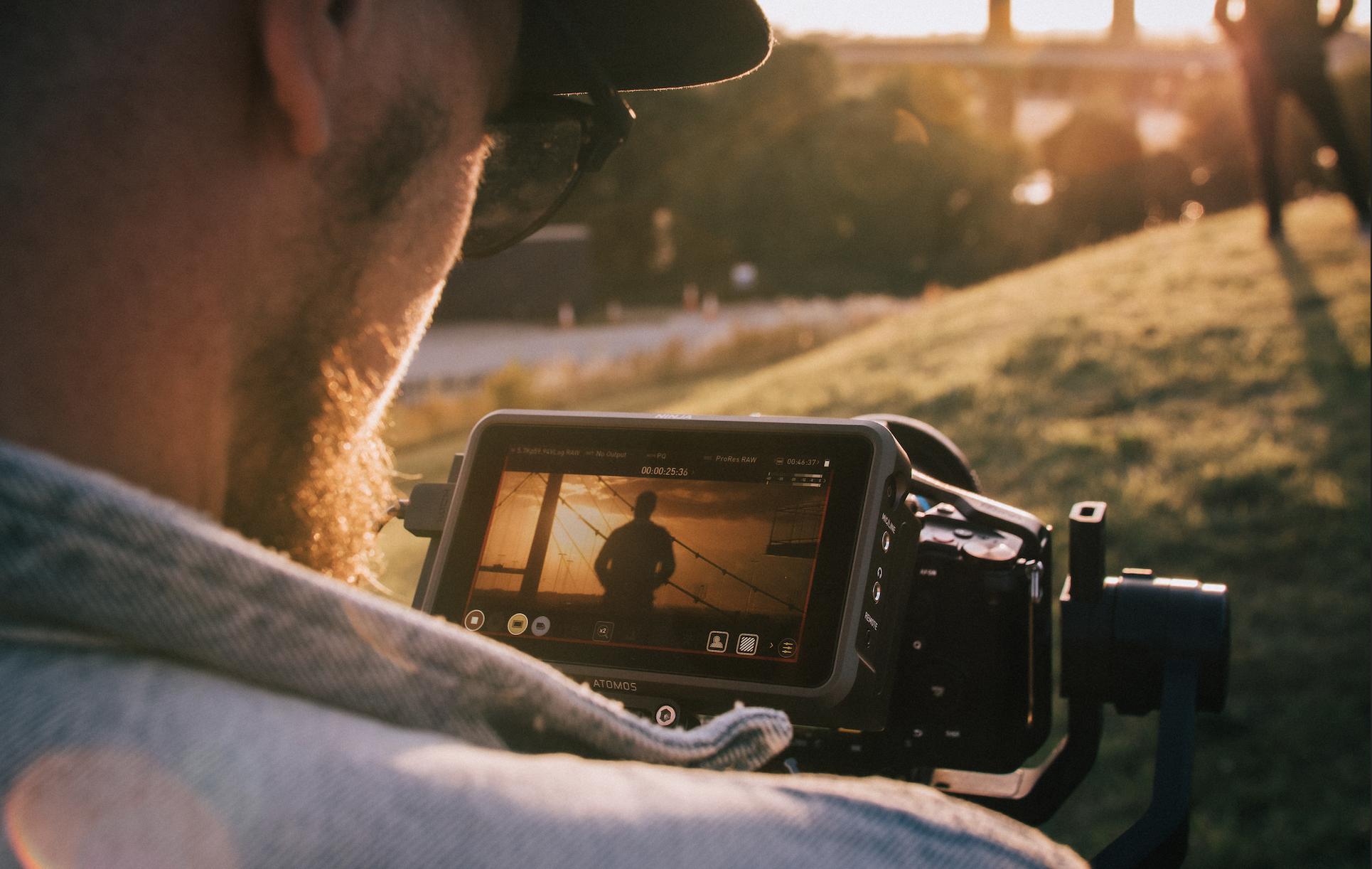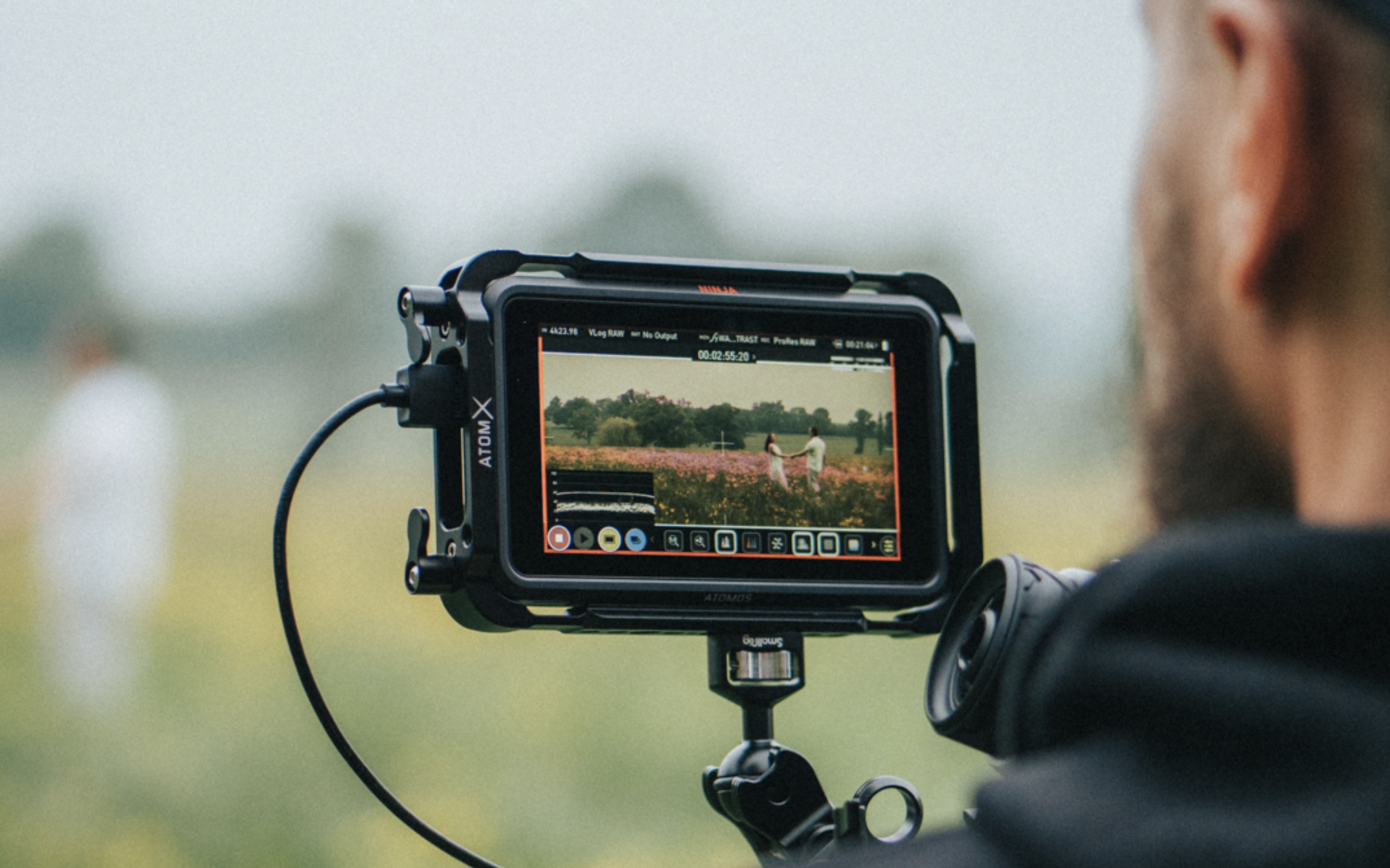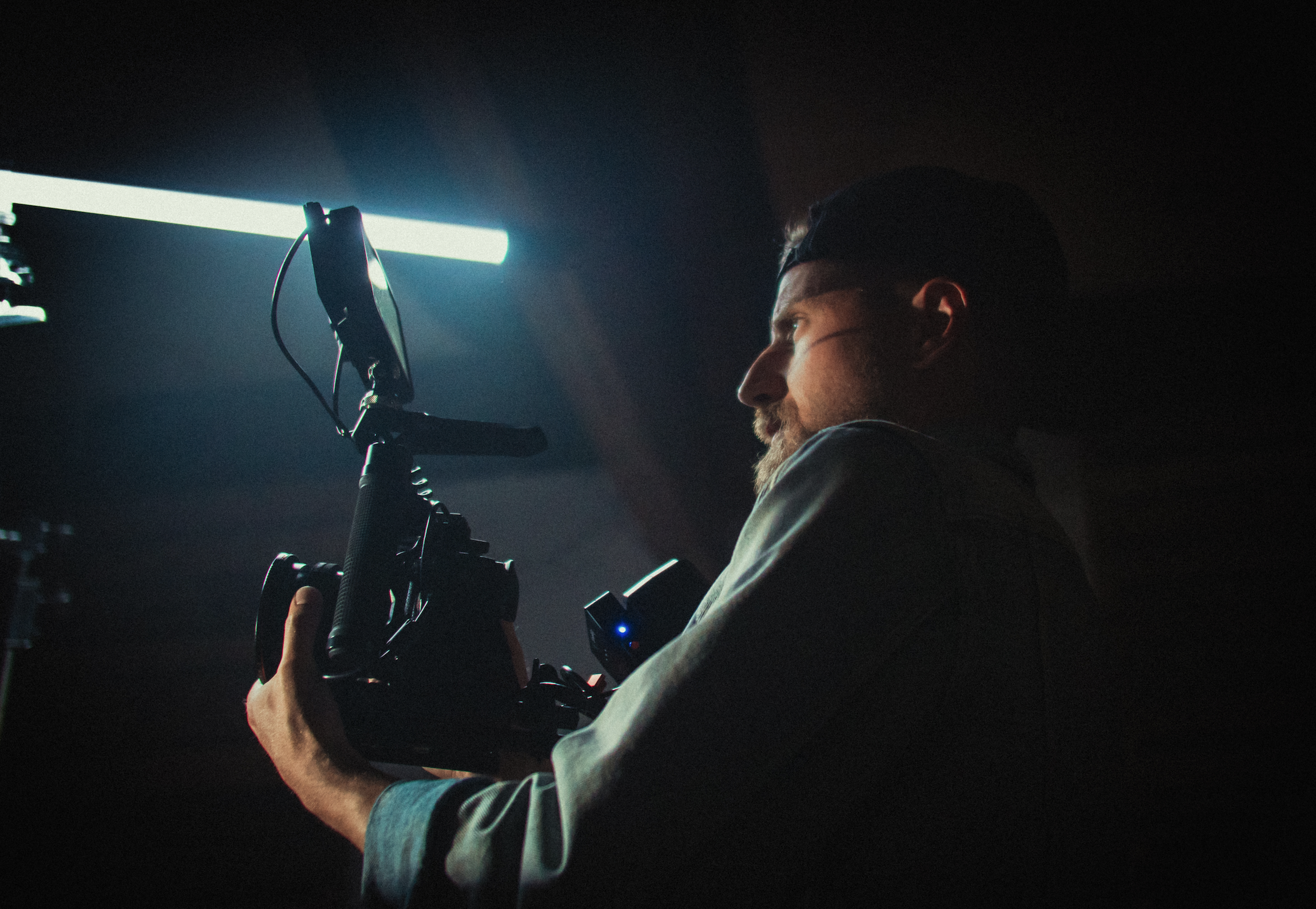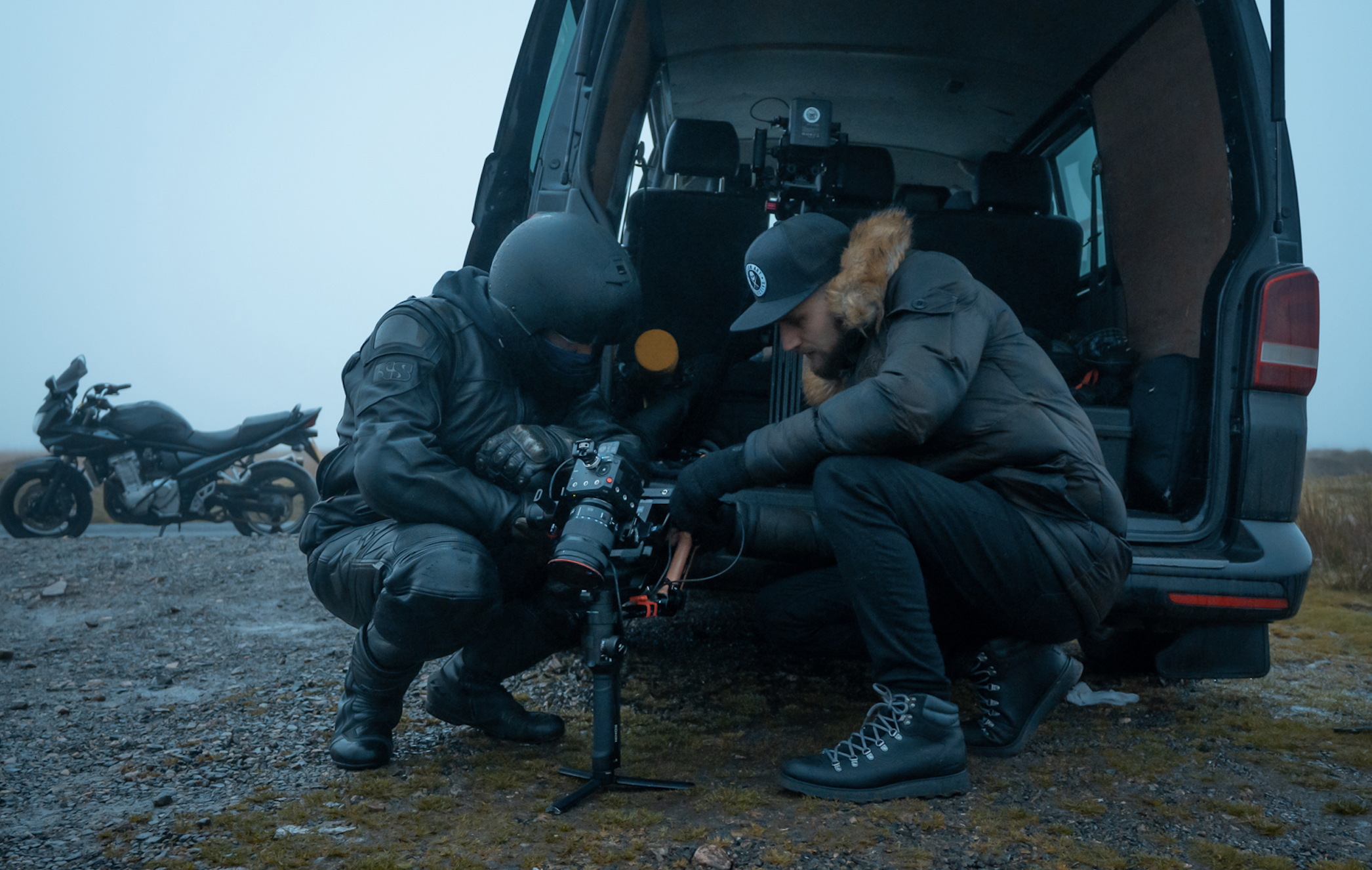How To Create A Video For Your Brand
HOW TO CREATE A VIDEO FOR YOUR BRAND
A GUIDE TO CREATING YOUR OWN VIDEOS BY PROFESSIONAL FILMMAKER AND VIDEO PRODUCER, TOMMY ROWE
In this ever changing digital age that we’re living in, video is a massively important part of any marketing strategy for brands big and small. From freelancers and sole traders to larger companies, any business or organisation needs a video to tell the world what they do, because a well produced video can do things that other media formats simply cannot.
So you have your own brand, business, or organisation, and you want to create a video for it, but don’t know where to start?
Don’t worry, you’re not alone. Video Production is indeed a vast subject and approaching it can seem pretty daunting, but it doesn’t have to be as complicated as you might think. Trust me!
WAYS TO APPROACH A VIDEO FOR YOUR BRAND
When it comes to creating a video for your brand, you have 3 main options. Each one has its own pros and cons. So let’s have a quick look at them;
OPTION 1: DO IT YOURSELF
DOING IT YOURSELF is the obvious (and best) answer, if you don’t currently have a budget available to have a video produced for you, or, if you’re looking to save finances to spend on other things.
You may have dabbled with a bit of photography or video before. You may have a passion for photography and therefore already have a ‘hybrid’ camera that shoots good quality photos and video, or even have access to one via a friend or family member. You may have put together a little family video before, or have some basic knowledge and understanding of how to do it. Maybe, you have a young family member that’s studying film or photography at college, and they might be willing to help you out.
Whatever the case may be, and whatever your knowledge and experience may be, pretty much anyone can put together a surprisingly effective video, for next to nothing, using only tools that you have at your disposal.
No, really!
This is especially true in this day and age, because pretty much all of us now walk around with a secret weapon in our pockets, but more on that in a moment.
OPTION 2: HIRE A PROFESSIONAL
It goes without saying that of course there are limitations to the DIY approach.
Depending on your video plans and how ambitious they are, you may simply have no option but to employ someone with the necessary skills and expertise to execute your vision. A professional working in the video production industry will always be able to execute a video to a much higher standard than a beginner or amateur, and there are several reasons for this.
Firstly, they do this every single day and practice makes perfect. A video pro will likely have spent many years learning the craft, gaining experience, building the skills, knowledge and understanding needed to execute moving images, lighting, sound, as well as editing, to a super high level. They will likely have a much better idea about how to effectively get your message across in a video format.
Secondly, like any professional in any trade, they invest in the tools for the job. Professional video and filmmaking equipment is expensive. Super expensive, in fact. Professionals in the video production world will have invested many thousands over a long period of time on cameras, lenses, rigging and hardware, lighting and sound equipment, and much more. All of this is necessary to create videos with a high production value, making them look and sound polished and professional.
If you want the best possible ‘quality’, or your project is complicated and/or fairly ambitious, then your best option will likely be to hire a video production professional. The obvious compromise is that it costs money, so your ability to approach a video this way will very much depend on you having the budget available to do so.
However, there is a third and final option;
OPTION 3: A HYBRID APPROACH
You can DIY it. You can hire a pro to do it for you. Or, you could do a bit of both.
The video production process is a long one and there are many elements that contribute to it. In the professional world, there are dozens and dozens of professions and specialities that contribute to the creation of a film or video. Maybe you are capable of doing some parts of the process, but not others.
Perhaps you’ve done some filming before, but have no idea about editing. Conversely maybe you’ve done some editing before but don’t have the tools available to you to capture the all important raw ingredients - high quality images and audio.
Many professionals in the video production world will take on projects on a shoot-only, or edit-only basis. So another viable option would be to aim to do the parts of the video production process that you think you can manage yourself, and then have a professional do the rest. Or, have a professional film the content for you, and then you do the rest.
This approach can be very cost effective and have you end up with a higher quality end product than the complete DIY approach. It can also end up costing you less than having a professional carry out every stage of the process. This middle ground approach can result in a fairly high quality video at a surprisingly affordable cost.
Another related option would be to speak to a professional for advice, request a video consultation, or even book a training/mentoring session. You can learn the basics from a pro very quickly and it should cost you a fraction of a full professional video production fee. It could very well give you the basic skills and understanding you need to then take the DIY approach. More on this below!
HOW TO MAKE YOUR OWN VIDEOS
At some point soon, I intend to write a full and comprehensive guide on how to create your own videos using only the tools you have at your disposal, but for now, here is a brief guide that should help get you started.
LEARN THE BASICS
The first recommendation would be to educate yourself. Investing just a small amount of time into learning the basics and fundamentals of video production will make a massive difference when it comes to creating your own videos.
Today we are very fortunate to have one fantastic (and free!) resource at our disposal, and that is Youtube. You can learn how to do pretty much anything on Youtube these days and it is a fantastic go-to for budding video enthusiasts. One search on Youtube for ‘create your own videos’ will bring up an almost endless list of walkthroughs and tutorials from professionals and enthusiasts all around the world.
The Rowe Films Youtube Channel features a few educational videos that you might find helpful, so be sure to check it out, and do subscribe as well, because we intend to post more content like this in the future.
Spend some time learning the basics of creating videos, and this will serve you very well!
FIGURE OUT WHAT EQUIPMENT AND TOOLS YOU MAY ALREADY HAVE AT YOUR DISPOSAL
CAMERAS
As we touched on above, you may have access to a camera and perhaps one or two lenses. That would be fantastic, however, don’t forget about that highly capable camera that you carry around with you everywhere you go.
With each passing year, the cameras in mobile phones become more and more capable. Most of them are now able to capture fairly high quality 4K Video, in varying frame rates, with some professional functionality built into them too.
The recent iPhone 15 is a case in point. It’s shown to be able to compete (to some degree and in certain shooting conditions) with high end cinema cameras. In my opinion we are a long, long way away from mobile phones replacing dedicated professional cameras, however there is no denying how far they have come. Give a mobile phone camera enough good quality light, and it’s impressive how good they can look. So much so, many people not involved in image creation in some capacity may not be able to tell much of a difference without looking really, really hard.
So if all else fails and you aren’t able to get your hands on a dedicated video camera, just use your phone!
LIGHTING
All the talk online around video equipment usually centres around what people perceive to be the most important bits of kit - cameras first, followed closely by lenses. This is understandable given they are the tools that physically make the images, however in my personal opinion, the single most important thing is often neglected - lighting. Nothing gives a beginner video away more easily than inadequate or poor lighting.
Truthfully, a consumer level camera (or even a mobile phone for that matter) can look very high-end given good lighting conditions. At the same time, a top of the range cinema camera costing tens of thousands will still produce poor results in sub standard lighting conditions. Light is literally everything.
The first step is to always remember the biggest, brightest and highest quality light source available to us, and that is the sun. Natural light can often be all you need, so make use of it.
The professionals among us use the sun all the time, and with great effect. If you film someone side on to a window with plenty of natural light pouring in, this can and often does look very flattering. Especially so if it is diffused. Using the sun is by far the easiest (and cheapest) way to approach the lighting in your own video.
The second step is to look around your home and workplace for lighting fixtures. You may have a DIY/comstruction work light or something similar that produces a decent amount of light output. One of my first ever ‘proper’ videos was a music video that I lit entirely with cheap tungsten work lights designed for use by builders and decorators, and the results are still pretty decent even to this day!
Perhaps you have a bright LED light buried somewhere in your garage? Table lamps will often look great in the background of a shot used as ‘practical’ lights to add visual interest to the your background and surroundings.
For the most DIY approach possible, use whatever lights you can get your hands on to add light to your subject, and to the background of your shots.
Finally, you could consider investing in your own dedicated video light. There are lots of highly cost effective LED options online, and one dedicated light with a good amount of light output can be used in a variety of different ways. If making your own video content is something you intend to do more of going forward, purchasing your own light may well be one of the best investments you could make.
SOUND & AUDIO
Capturing good quality audio is probably one of the most difficult things to achieve without dedicated equipment, but it’s also one of the most important.
Studies have shown that viewers of a video can tolerate below par visuals, provided the audio quality is good, however they can’t put up with poor audio, no matter how good the visuals look. If it sounds terrible, the viewer will simply stop watching. Capturing audio is also the one aspect of video production that non-professionals most often get wrong.
Therefore if you only have a few quid to spend on obtaining a piece of equipment specifically for the purpose of making your own videos, then some kind of dedicated sound recording device would be a very good idea.
The key to capturing good audio is to have the recording device or microphone as close to the source of the sound as possible. The further away the recorder is from the source of the sound you’re trying to capture, the more background noise will be picked up, and the ‘Proximity Effect’ also comes into play.
All of this means that just using the sound recorded internally within the camera you’re filming with, likely won’t do. At least not in all circumstances. It will likely sound ‘thin’ and pick up too much ambient background noise. Not what you want if a professional video is what you’re looking to achieve.
You can purchase relatively cheap voice recorders online that don’t cost a fortune but will do a far better job than the microphone built into your camera. Even better, if you can get one with an external microphone input, you can then use a cheap lavalier microphone to go with it. This is a great option for filming interviews and talking heads, and it would be worth the small investment, assuming that is the kind of content you intend to include in your video.
The best way to approach recording interview dialogue, or simply any person talking in a video, would be to place the sound recording device or microphone as close as possible to the mouth of the person doing the talking, but not so close that you end up picking up ‘plosives’. Make sure the gain level isn’t too high either, so that the audio clips and distorts.
Finally in the edit, you can sync this externally recorded audio together with the video footage from the camera. This will give you the best possible sound quality and create a much more professional feel to the video.
LOCATIONS
What locations does your brand have at its disposal? If you have an office or studio, how does it look? Does it have a good amount of natural light, or is it dark? If you were watching a video filmed in there yourself, would you personally find it interesting to look at, or not?
The location contributes an awful lot to the overall look and feel of a video. If your work premises isn’t a suitable location, consider going somewhere else. If you have no better option available to you, you could even make use of public spaces such as local parks, which might at the very least look more visually pleasing.
Within the context of your subject matter, shoot your video wherever it would look best visually, but whatever you do, don’t forget your audio quality. You don’t want to record sound anywhere with too much background noise.
GENERAL TIPS AND TRICKS OF THE TRADE
Here are some tips and tricks that can help you pull off a more professional video production.
STABILISE YOUR FOOTAGE
There’s nothing worse than shaky camera footage. Many cameras (including mobile phones) today have stabilisation built into them, which means you can hold the camera in your hand without the distracting handheld shake or ‘micro-jitter’. If not, put the camera on a tripod or set it down on a surface so that the shot is ‘locked off’. A static shot is always better than a jarring, shaky one. If all else fails and you’ve ended up with shaky footage that you can’t reshoot, you can try stabilising it in post-production. Pretty much all video editing software today include tools for stabilising video footage.
THINK ABOUT WHERE, AND HOW, TO FILM YOUR SUBJECTS
One key element of creating any visually pleasing shot is to create depth in your shots. Instead of filming a subject flat up against a wall, position yourself so that you can film INTO a space. If you stand in a corner of a room and have your subject stand in front of you, you can film them by shooting into the room, so that they have an actual background. This creates depth behind them, and visual interest in the shot. Filming something flat up against a wall is one sure way to make a shot look dull, boring, and non-professional.
THINK ABOUT COMPOSITION AND FRAMING
If you want to play it safe, centre your subject in the middle of the image or frame. If the subject is slightly off centre and not intentionally so, it can put some people off. Centre framing is often the easiest and safest approach however there are other compositional techniques that can look more visually pleasing.
If you are making your video in a ‘landcape’ (wide) aspect ratio and were to divide your frame into three sections, you will have two vertical lines. Position your subject directly on one of these vertical lines and have them face slightly towards the other end of the frame, so that they are facing into the frame with more space in front of them than behind them. This is a very basic description of ‘The Rule of Thirds’ and in some circumstances it can be a very good compositional technique that will add to the overall professionalism of the video.
At the same time, make sure there is adequate space above your subject or ‘headroom’. Unless you are intentionally filming a close up, try not to cut off the top of their head!
Finally, remember to consider other elements that fall into the frame. However you position your subject, make sure anything else that can be seen in the frame compliments the overall image.
THINK ABOUT DIFFUSING YOUR LIGHT SOURCES
If you’re using a light source to light your subject, artificial or natural, consider trying to diffuse and soften it. If you are using an artificial light to light your subject, try hanging a white linen bed sheet or similar material in front of it. The light will shine through the material before it hits your subject, and this will diffuse and soften the light. Diffusing light reduces harsh shadows and highlights, making it more flattering on the subject, adding professionalism to the overall look. Equally, if you are using natural light coming from a window, try putting up some window sheers or other thin material to allow some of the light through. The light that does pass through will be soft and diffused.
FILM SOME ‘B ROLL’ FOOTAGE
As well as interviews and talking heads, film some general footage related to your subject matter. You can cut B Roll footage in with, and over the top of your dialogue to make the video more interesting. B Roll subjects can be anything relevant to whatever is being talked about. If somebody is talking about how they do their job, capture some footage of them actually doing it. Capture a variety of shots from different angles, from wide to close up, focusing on your framing, composition, and of course lighting. This footage will come in very handy, giving you options in your edit.
USE DIFFERENT FRAME RATES
Be careful not to unintentionally mix frame rates as this can cause issues, however you can use higher frame rates to create slow motion in your edit. Slowing your footage down can work very well for any B Roll footage being used in your video, and it can also help to smooth out handheld footage, or shots where the camera is moving. There are plenty of beginner’s tutorials online on how to achieve slow motion, so go and check out some videos on Youtube.
MAKE USE OF FREE RESOURCES
There are plenty of video resources available online, many of which are free. One great example for editing software is Blackmagic Design’s DaVinci Resolve. It’s an incredibly powerful piece of software that will give you all the tools you need to edit a professional looking video. Best of all, it’s completely FREE! Crazy really. On first glance the software can look daunting, especially so for beginners just stepping into the world of video, however the basics can be learnt very quickly and easily, allowing you to put together a basic video edit in no time at all.
DON’T OVER-EDIT YOUR VIDEO
One very common mistake beginners make when it comes to the editing or post-production side of things, is over editing. I’m not sure exactly why this phenomenon happens, but it’s real. Many of us have been there, at the beginning of our own video production journeys.
You might think those flashy transitions built into your editor make your videos look more ‘pro’, but trust us, they probably don’t. Not only will they likely be distracting and jarring, but they will probably give your edit away as a bit amateur. Further to that, they will more than likely make your video look dated, far, far quicker than anything else, because trends in these things change on almost a weekly basis. Besides, flashy transitions are probably not even needed in your video. Hard, straight cuts are usually just fine. So be sure to use transitions sparingly, and only where they serve an actual purpose. Remember, they are designed to signify a transition from one thing to another, or sometimes to add energy to a dynamic edit. If you can, try to stick to the types of transitions that have stood the test of time such as subtle dissolves and fades.
The same goes for colour, or ‘color’ for our friends in the States. The use of colour correction and colour grading in film and video is an art form in its own right. It’s a skill that takes many, many years to master, and it is a profession in its own right. You could even argue that it is in fact a science. Therefore, a beginner just starting out in their visual journey is highly unlikely to get colour right to begin with. Those generic drop on ‘filters’ and ‘looks’ that are built into your editor (and social media platforms) probably aren’t going to look all that great. They will often over saturate and/or crush your video footage. So try to stick to basic tweaks to exposure and saturation so that things look nicely balanced with continuity from shot to shot, and only use colour filters or ‘looks’ subtly and sparingly. If you are absolutely adamant that you like the look of that built in ‘orange and teal’ filter, then just dial it’s strength back slightly if your software allows you to. Trust us, a little goes a long way!
When it comes to all video editing effects, be careful, and just remember that ‘less is usually more’.
KEEP EXPERIMENTING!
Every stage of the video production process requires its own skills. The best thing any beginner can do is experiment. You are highly unlikely to get things right first time, so keep playing, keep tweaking things, and most importantly, persevere. You can do this!
VIDEO PRODUCTION TRAINING & MENTORING
As we briefly touched on above, one way to approach all of this would be to book a one to one training session before diving in. It can be very cost effective and give you the basic skills you need to create a good video.
I carry out a lot of training and mentoring these days with individuals interested in learning the craft, from absolute beginners just getting started, through to more advanced videographers wanting to understand how I approach things.
For a small fee on either an hourly or daily basis, I am able to provide these services to those that might not have the budget available to have a professionally produced video commissioned, but want to learn some basic skills in order to do it themselves.
Training sessions can be carried out in person, or over video call. We can chat through what tools, equipment, and locations you have available to you, discuss camera settings and lighting techniques, and walk through some general tips and tricks that will help you execute a professional looking video.
If you’d like to arrange a chat, get in touch today by submitting the Consultations & Mentoring form on our Contact Page.
I hope you have found this article useful and if you do intend to give your own video a crack, I wish you all the best of luck with it!
Please do keep an eye on our Blog page too, as we intend to put together more in-depth guides and tutorials in the coming weeks.
All the best!
Tommy Rowe




